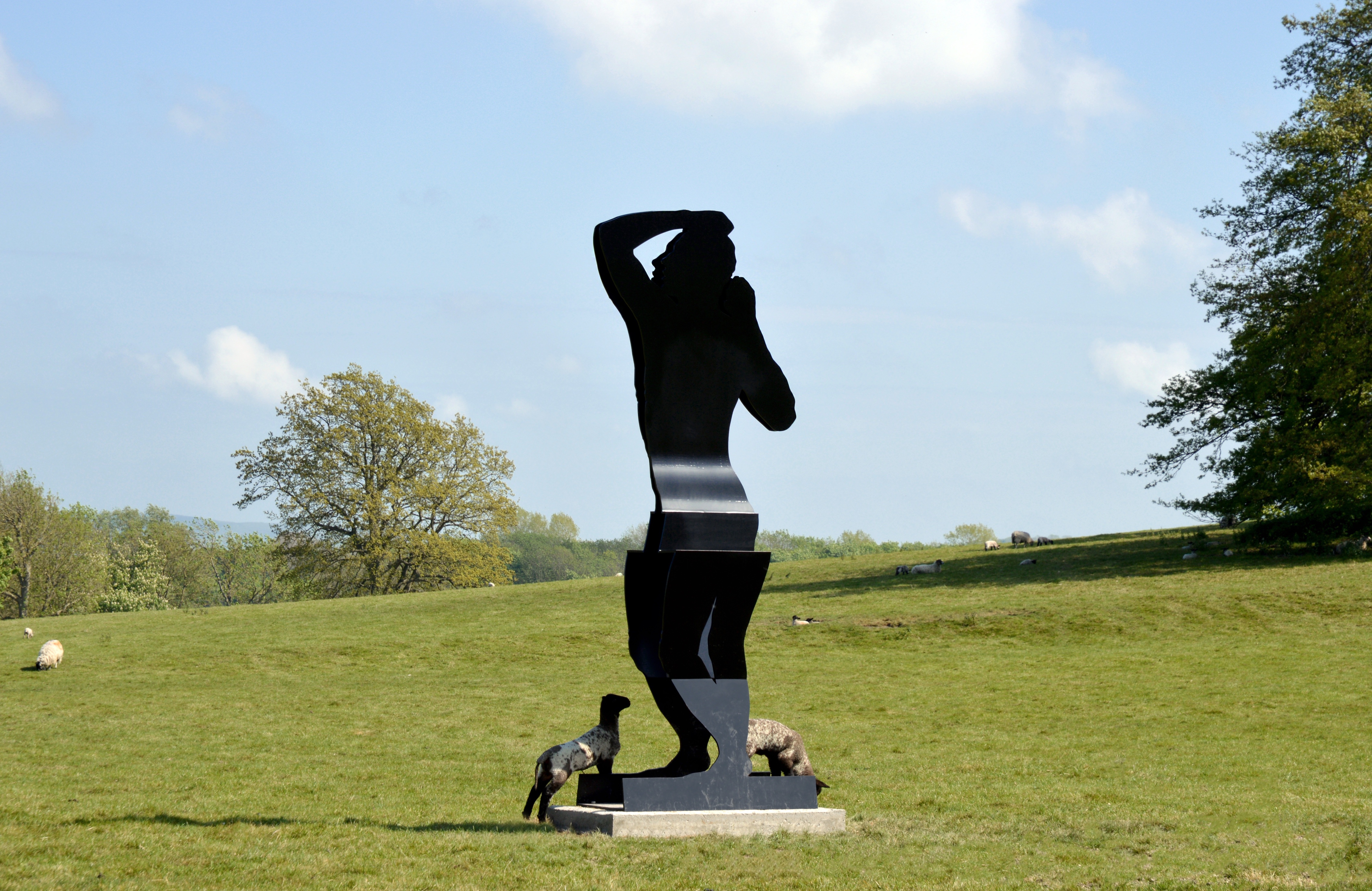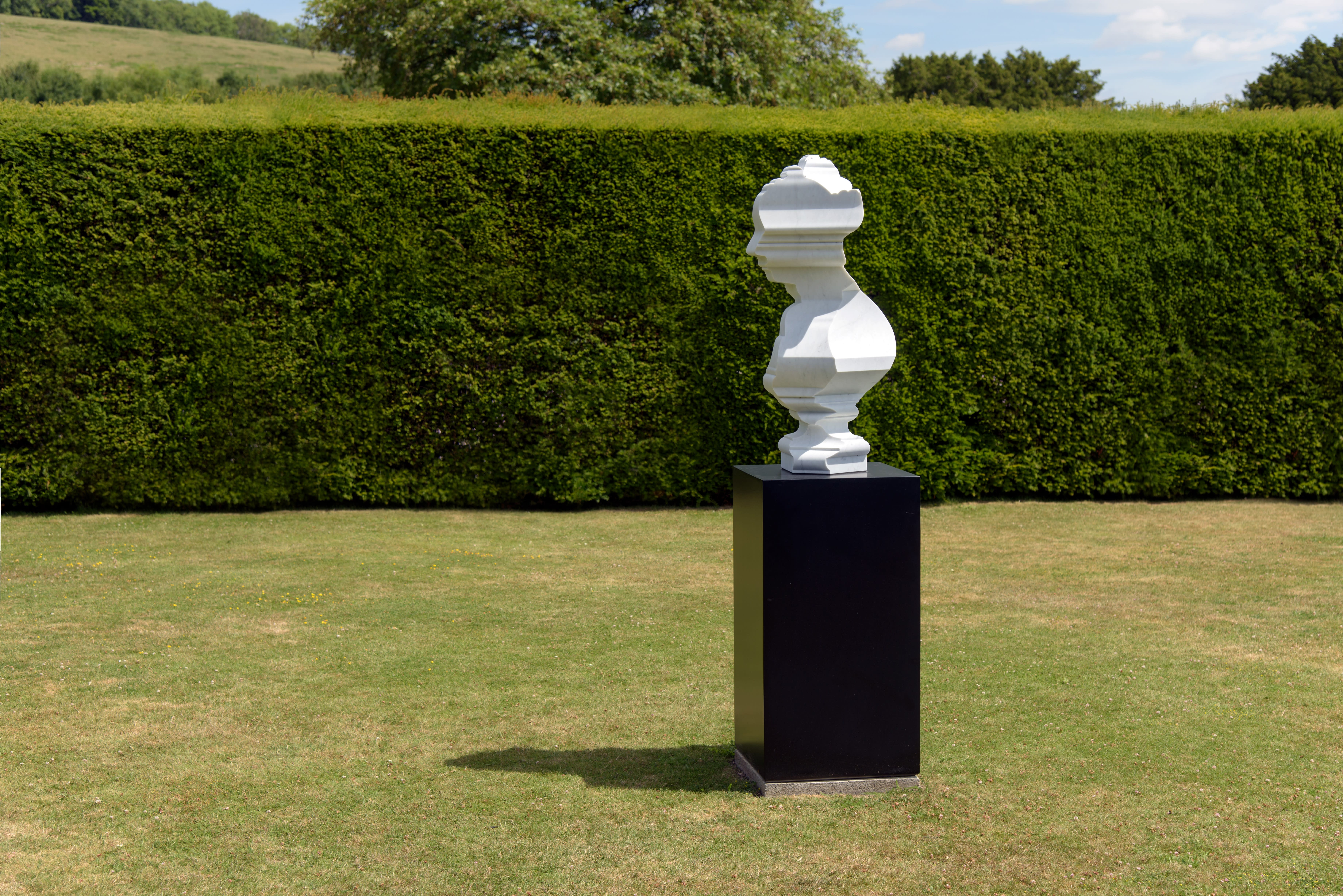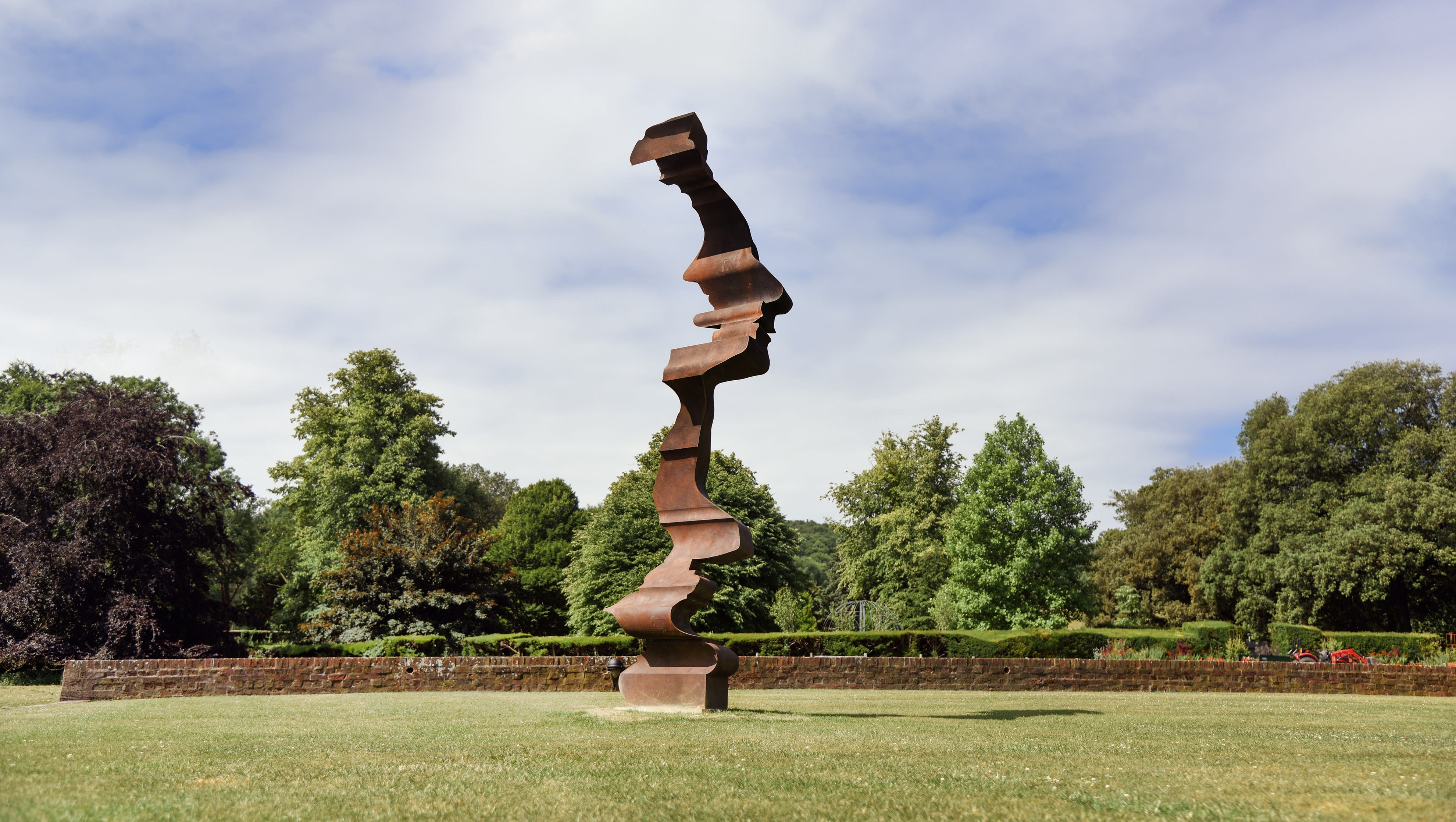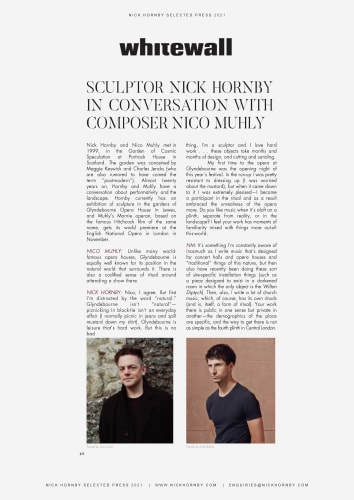Sculptor Nick Hornby in Conversation with Composer Nico Muhly
Words: Whitewall
Photo by Nick Ballon.
Nick Hornby and Nico Muhly met in 1999, in the Garden of Cosmic Speculation at Portrack House in Scotland. The garden was conceived by Maggie Keswick and Charles Jencks (who are also rumored to have coined the term “postmodern”). Almost twenty years on, Hornby and Muhly have a conversation about performativity and the landscape. Hornby currently has an exhibition of sculpture in the gardens of Glyndebourne Opera House in Lewes, and Muhly’s Marnie operan, based on the famous Hitchcock film of the same name, gets its world premiere at the English National Opera in London in November.
NICO MUHLY: Unlike many world-famous opera houses, Glyndebourne is equally well known for its position in the natural world that surrounds it. There is also a codified sense of ritual around attending a show there.
NICK HORNBY: Nico, I agree. But first I’m distracted by the word “natural.” Glyndebourne isn’t “natural”—picnicking in black-tie isn’t an everyday affair (I normally picnic in jeans and spill ketchup down my shirt). Glyndebourne is leisure that’s hard work. But this is no bad thing. I’m a sculptor and I love hard work . . . these objects take months and months of design, and cutting and sanding.
My first time to the opera at Glyndebourne was the opening night of this year’s festival. In the run-up I was pretty resistant to dressing up (I was worried about the mustard), but when it came down to it I was extremely pleased—I became a participant in the ritual and as a result embraced the unrealness of the opera more. Do you like music when it’s aloft on a plinth, separate from reality, or in the landscape? I feel your work has moments of familiarity mixed with things more out-of- this-world.
NM: It’s something I’m constantly aware of inasmuch as I write music that’s designed for concert halls and opera houses and “traditional” things of this nature, but then also have recently been doing these sort of site-specific installation things (such as a piece designed to exist in a darkened room in which the only object is the Wilton Diptych). Then, also, I write a lot of church music, which, of course, has its own rituals (and is, itself, a form of ritual). Your work there is public in one sense but private in another—the demographics of the place are specific, and the way to get there is not as simple as the fourth plinth in Central London.
NH: You’re right. However, I don’t think that public is “good” and private is “bad.” I’ve made work in a New York park funded by private donors, and I’ve made work in the Tate funded by the government (DCMS). I think the lines quickly blur. But you’re right, Glyndebourne’s not a public place. I actually requested that my show could be viewable by appointment, meaning that anyone can call up and arrange permission to see the works. They agreed. This is a first for them. It was important for me.
NM: I’m glad to hear that you can ring up; that’s a very good idea. I suppose inasmuch as you and I met in just such a private garden, I’d hoped you’d allow for a small chink in the armor. Do you think about performance and ritual in your work?
NH: Performance, yes; ritual, I’ve not before. My works are arguably extremely theatrical— there is the idea of walking around the sculpture and the reveal of seeing different facets. This type of performativity doesn’t interest me so much. What does interest me is legibility of narrative in process: You can see the marks and these imply the maker.
To return to “ritual,” I don’t normally think about things in terms of ritual, but to reflect on it, the art world certainly has modes of behavior which perhaps are very ritualistic: show openings, hobnobbing, auctions. And the repetitions . . .
NM: Yes! That is a form of ritual! But I suppose one of the things one learns sitting around churches is that people, when they view (particularly ecclesiastical) sculpture, have such intense and personal ways forward—I followed a woman around a chapel in Naples (with the Cristo Vellato), who always did the same thing: brush past the object, then look back at it from a distance, come back, read the placard, and then look. I suppose I’m asking if you have a ritual when you look at other work versus how you expect yours to be seen?
NH: I’ve done a very similar thing, flirting with a marble figure, wanting to touch it, then touching it. As a participant of the contemporary art world, I’m interested in the debate, so I read the placards. Sometimes a show’s purpose is more about the overarching curatorial narrative and the artworks are a means to that end; other times you can zoom into one work and everything else fades.
“Nick Hornby Sculpture (1504–2017)” is on view at Glyndebourne until March 2018. Marnie gets its world premiere on November 18 at the English National Orchestra in London.



